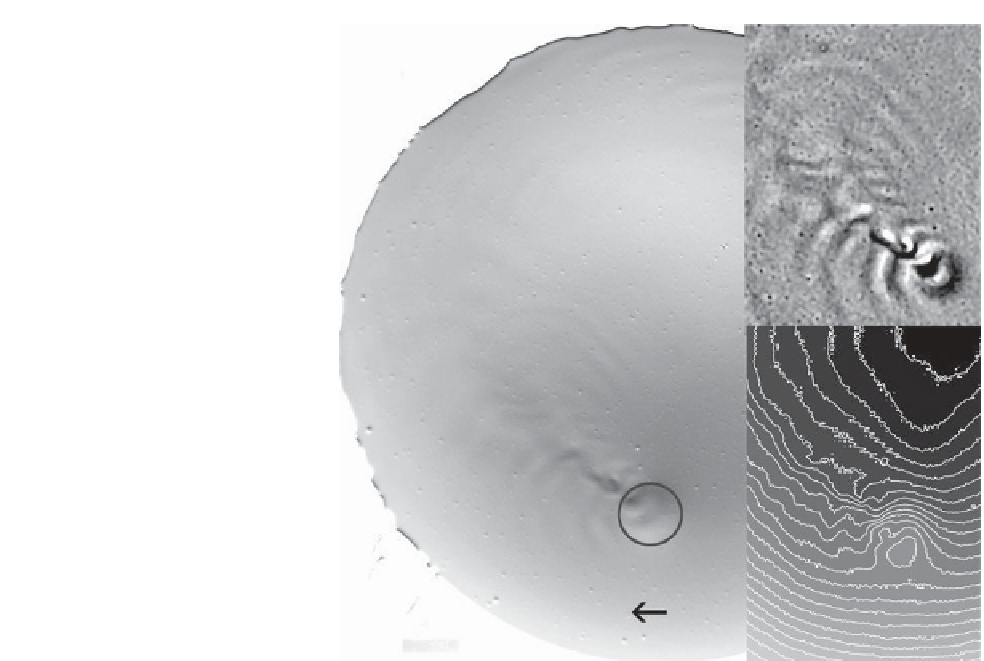Geoscience Reference
In-Depth Information
(a)
3
(b)
2
1
Figure 5.4.
Altimetric image of the westward flow above a small mountain (white circle). The direction of the mean flow (clockwise
solid-body rotation) is indicated by the arrow. The train of inertial waves in the lee of the mountain is indicated by 1 while 2
indicates the region where the instability and wave breaking occurs. Secondary emission of the inertial waves by the instability is
indicated by 3. (a) Vertical component of the relative vorticity in the lee of the mountain. The gray scale shows the dimensionless
vorticity
ζ/f
0
in the range between -0.5 and 0.5. (b) Isolines of surface topography with intervals of 2
μ
m between the isolines.
waves that are visible in region 3 (Figure 5.4). Note that
the emission of these secondary waves and the fact that
they originate from the breaking primary wave are more
evident from the video sequences of the flow rather than
from a still image.
Another interesting and geophysically relevant example
is the flows around an obstacle in the rotating fluid. Here
we give only a brief description that illustrates the appli-
cation of AIV. Further details can be found in
Afanasyev
et al.
[2008a]. Altimetric images from our experiments
are shown in Figure 5.5. A cylindrical obstacle of diam-
eter
d
= 5.9cm was fixed to the bottom of the tank (at
3 o'clock in Figure 5.5). The same technique we used in
the previous experiment to create a mean flow over the
mountain was used here. The rotation rate of the tank
was slightly changed up or down from the null rotation
to create either westward or eastward mean flow. Note
that in
Afanasyev et al.
[2008a] a different method was
used: The cylinder was towed in the azimuthal direction
while the rotation rate of the tank was kept constant. The
disadvantage of the simpler method we use here is that
the mean flow decays, albeit on a relatively slow Ekman
time scale.
In the experiments with an obstacle we observe again
the difference between the westward and eastward flows.
When the mean flow is westward, vortex shedding from
the cylinder forms a regular vortex street (see Figures 5.5a,
5.6a, and 5.6c) similar to the von Karman-Benard vor-
tex street in classical fluid dynamics. Inertial waves, even
if they are emitted, are not easily visible there. When the
mean flow is eastward, we observe a familiar Rossby wave
in the lee of the cylinder (as shown in Figure 5.5 b), and
surprisingly, no vortex street is observed at all. To under-
stand the physics, we can consider again the fluid parcels
in the PV context. The difference between the flows over
the mountain and the flows around the obstacle is that
in the latter case the relative vorticity is changed not only
due to displacement of parcels northward or southward
as they travel around the cylinder but also due to gen-
eration of vorticity in the boundary layer at the wall of
the cylinder. The main dimensionless parameter that con-
trols the boundary layer dynamics is the Reynolds number















